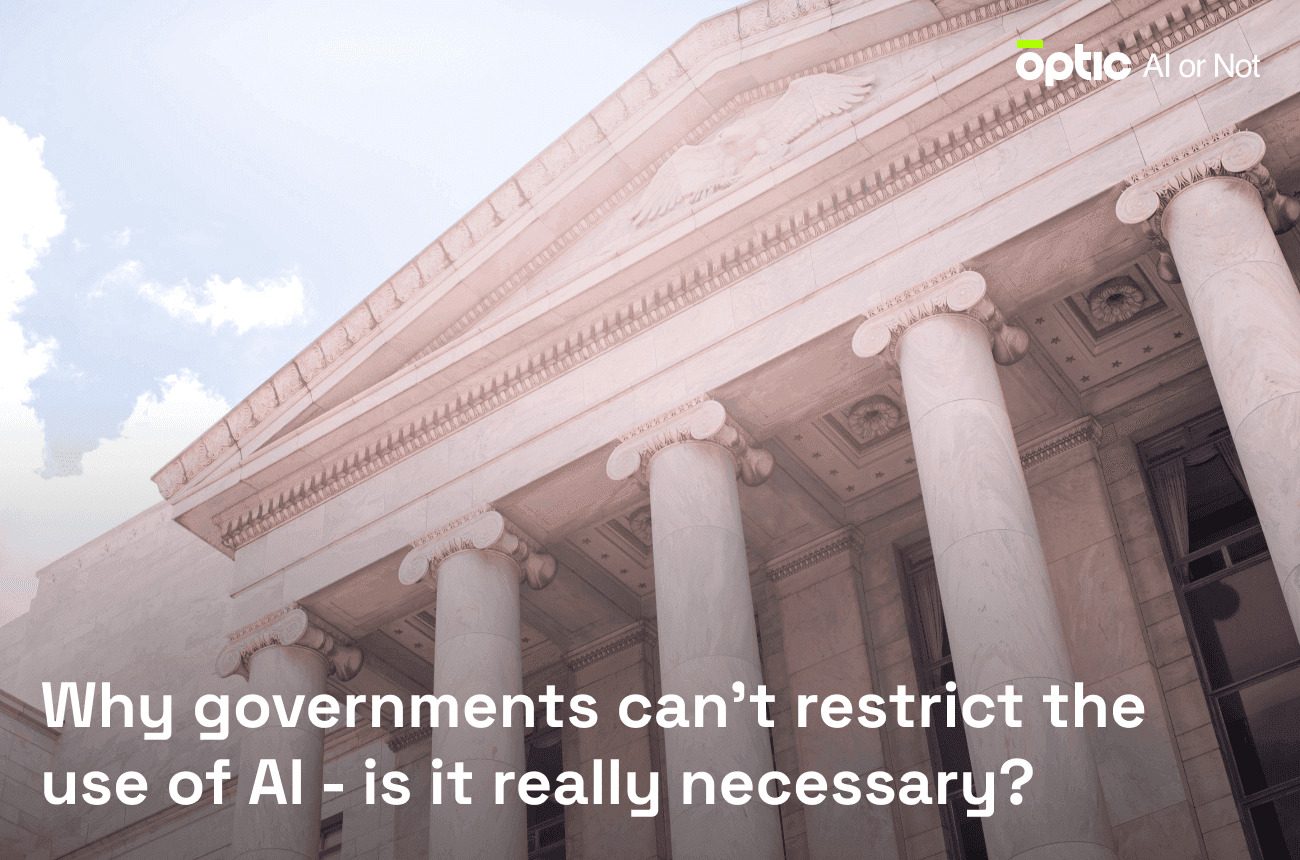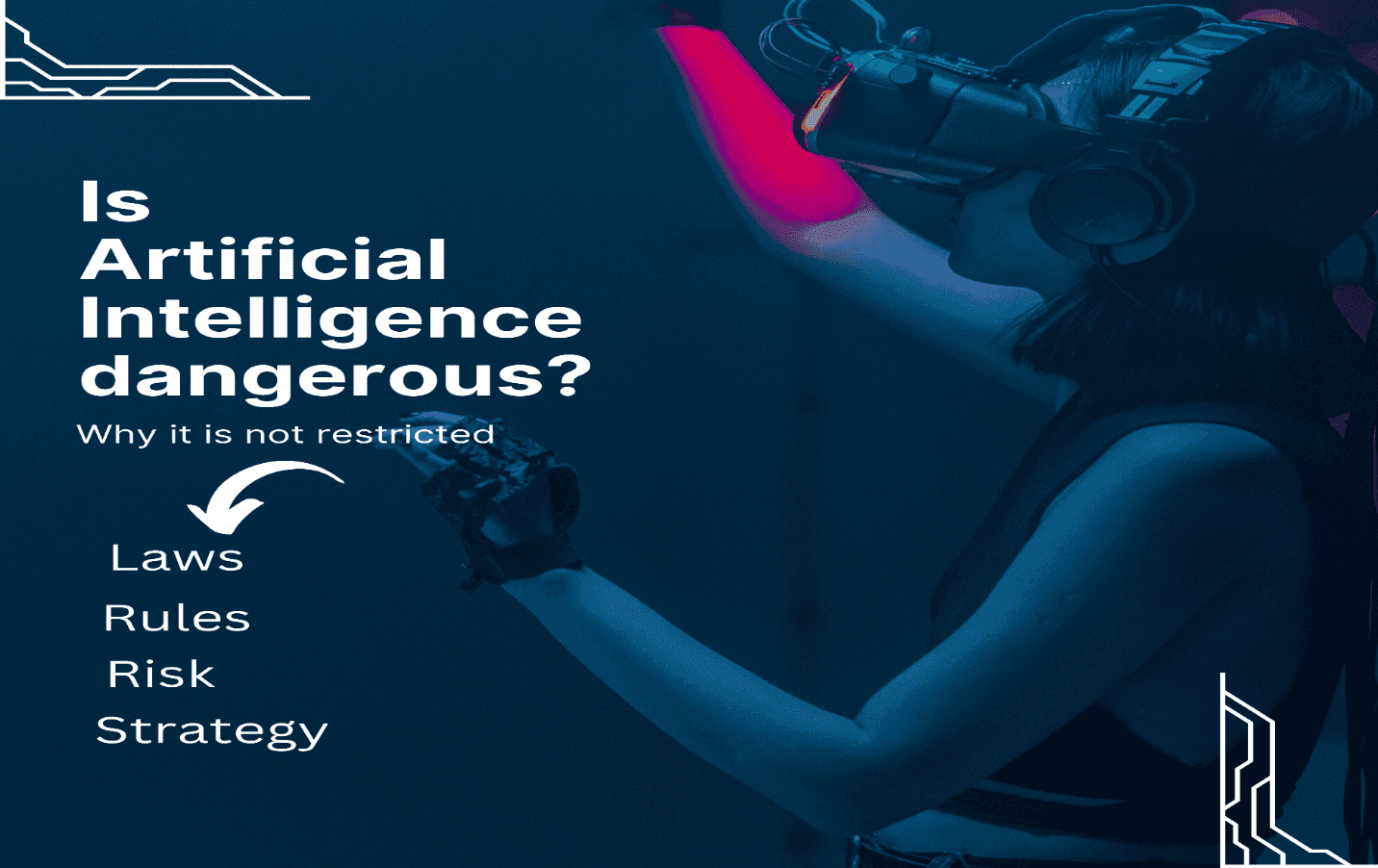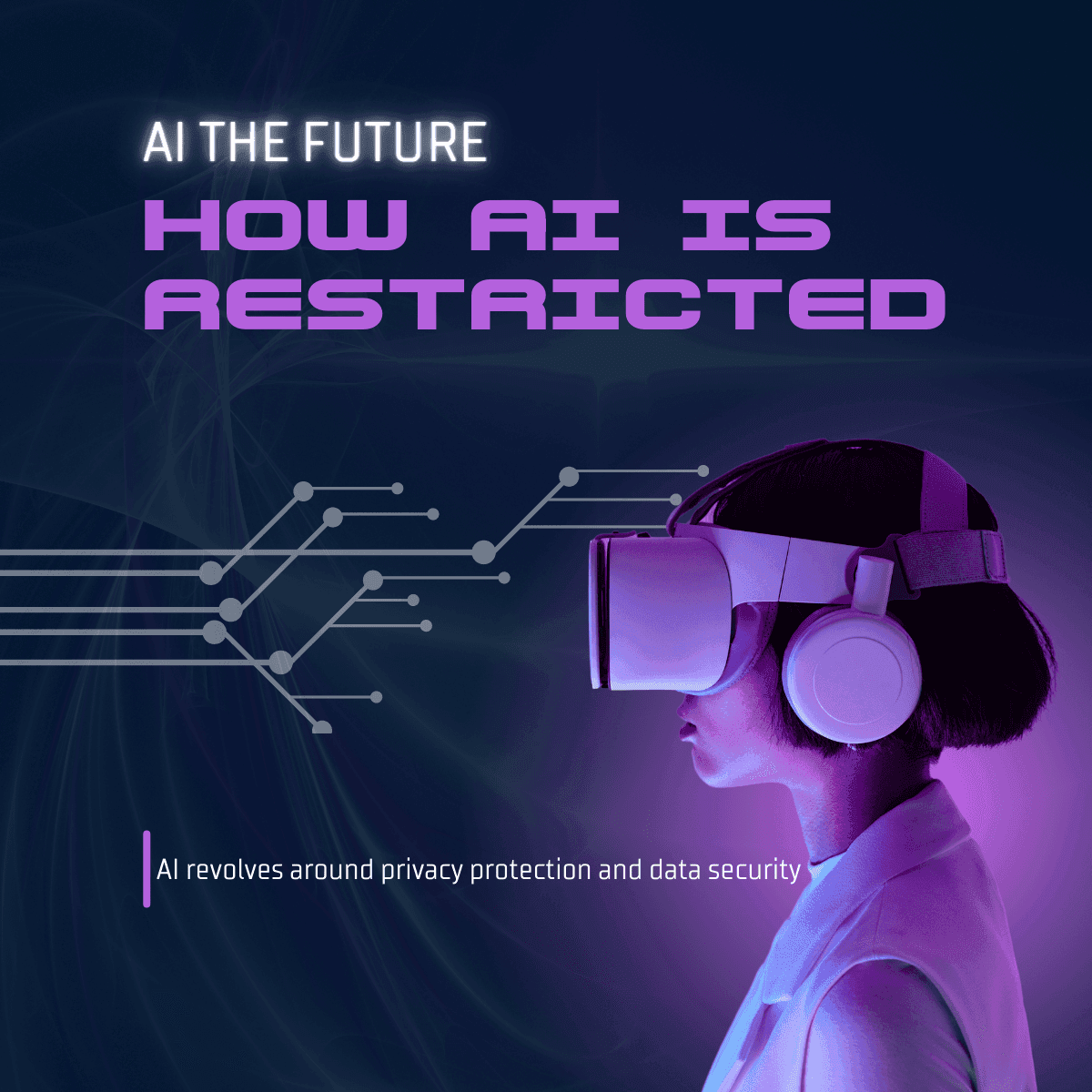Why governments can't restrict the use of AI - is it really necessary?

Deciphering AI Creations: Necessity and Challenges of Detecting AI Art
Heralding the AI Era: A Double-Edged Sword?
The recent surge in artificial intelligence (AI) applications has significantly altered numerous sectors, transforming our work routines and lifestyle. However, alongside this progress, we must grapple with questions about AI's ethical dimensions and possible risks.
The spotlight often falls on the issue of whether governments should enforce limitations on AI usage like AI Detection and check AI. This article explores the rationale and obstacles of implementing such restrictions, focusing on the intriguing task of using AI-generated art test and AI-generated checker for AI detection in content, etc.
Decoding the AI Quandary: Government Restrictions
Integrating AI technology into our daily lives has raised concerns among governments worldwide regarding its regulation. Supporters of limitations argue that they are crucial in safeguarding privacy, protecting data, and promoting ethical AI practices.
On the other hand, opponents of restrictions contend that they could hamper innovation and hinder technological advancements. To comprehend this intricate issue, examining the challenges involved in distinguishing AI-generated content and the obstacles it poses is necessary.

Detecting AI: Unraveling the Complications
AI Detection Tools: An Emerging Necessity
The increased use of AI-generated content highlights the pressing necessity for reliable AI detection tools. The primary objective of these tools is to differentiate between human-generated content and content generated by AI algorithms.
AI detection plays a crucial role in combating the spread of misinformation, identifying fake videos, and guaranteeing transparency in various fields such as literature, art, and image creation. Different AI generated checker help to identify if content is human or not AI or check AI generated content.
AI Detection: Navigating the Obstacles
There are various difficulties in identifying content that Artificial Intelligence generates. This is because the algorithms used in AI are constantly evolving and becoming increasingly advanced. Some of the significant challenges in distinguishing AI-generated content include the following:
Complex AI Models: With the emergence of generative adversarial networks (GANs) in artificial intelligence (AI), the quality of content produced has reached unprecedented realism. This has caused a significant challenge in distinguishing between AI-generated and human-generated content, as the former has become increasingly difficult to identify. It’s become pretty hard to recognize human or not AI content and AI detection is becoming increasingly difficult.
Progressing AI Techniques: As technology advances, the development of AI algorithms continues to progress rapidly. This means detection methods must adapt and keep up with the ever-evolving landscape of AI-generated content. Swift and effective identification of new forms of AI-generated content are essential to maintain a safe and trustworthy online environment.
Absence of Universal Indicators: It is imperative to have a universally recognized set of measures that can effectively distinguish AI generated content. This will require additional efforts to develop reliable detection mechanisms to identify such content accurately.
Overcoming the obstacles presented by the proliferation of AI-generated content requires a collaborative effort among researchers, tech companies, and governments to develop advanced AI detection mechanisms that accurately discern between human-generated and AI-generated content.
Assessing Government Restrictions on AI: Benefits and Limitations
Advocating for Government Restrictions
The chief argument advocating government restrictions on AI revolves around privacy protection and data security. AI systems can accumulate massive amounts of personal data, triggering data utilization and protection questions. Government rules can ensure AI applications adhere to privacy norms and deter malicious uses compromising security via AI detector, and etc.
Moreover, restrictions can facilitate AI's honest and ethical service by providing guidelines for AI developers and users, thus promoting responsible practices and preventing harmful applications.
Pitfalls and Challenges of Government Restrictions
They are implementing government restrictions on AI encounters inherent hurdles in defining and identifying AI-generated content. As AI techniques grow more advanced, the line between AI-generated and human-created content blurs. It’s hard to know is this AI or human or not AI?
Effective regulations demand clear definitions and criteria, which can be challenging to establish and enforce. Moreover, stringent regulations may stifle innovation and hinder technological growth, underscoring the importance of achieving the right balance.
Alternative Strategies for AI Detection
AI Detection Tools: Fostering Development
Training AI models to search content for AI Detection is a promising approach. It involves exposing AI models to diverse content types, helping them recognize patterns specific to AI-generated content. However, this method requires ample data and continuous refinement. Collaborative efforts between researchers, tech companies, and governments are vital for creating practical AI detection tools.

Advocating Transparency and Accountability
Promoting transparency among AI developers to disclose AI-generated content can aid in fostering accountability. Additionally, governments can assist in setting standards and guidelines for AI-generated content, including appropriate labeling and user awareness of its origins. Clear expectations can build trust and promote responsible AI use.
Striking a Balance: Regulation and Innovation
The delicate task of striking a balance between rule and innovation is vital in the realm of AI. While addressing AI-associated risks is crucial, excessive restrictions could curb innovation and hamper this transformative technology's growth. A balanced approach accounts for the necessity of regulation to safeguard societal interests while nurturing innovation to exploit AI's full potential.
Establishing collaborative efforts between governments, tech companies, and researchers is imperative to achieve a harmonious balance. This synergy allows policymakers to keep up with the rapid advancements in AI technology while simultaneously creating a favorable environment that encourages innovation to thrive. Such collaborations are crucial to ensure that AI is developed and deployed to benefit society as a whole.
Concluding Thoughts: Navigating AI Regulations
Government restrictions on AI use involve complex challenges, particularly when in checking AI Detection in AI generated content. Identifying such content accurately is a formidable task due to AI algorithms' sophistication and swift evolution. Despite the valid concerns necessitating regulation, it's critical to find a balance between imposing restrictions and fostering innovation.
Collaboration between governments, tech companies, and researchers is crucial in developing practical AI detection tools and establishing guidelines for responsible AI use. Together, we can navigate the complexities of AI detection, balance regulation, and innovation, and ensure that AI technology is harnessed for societal benefit.